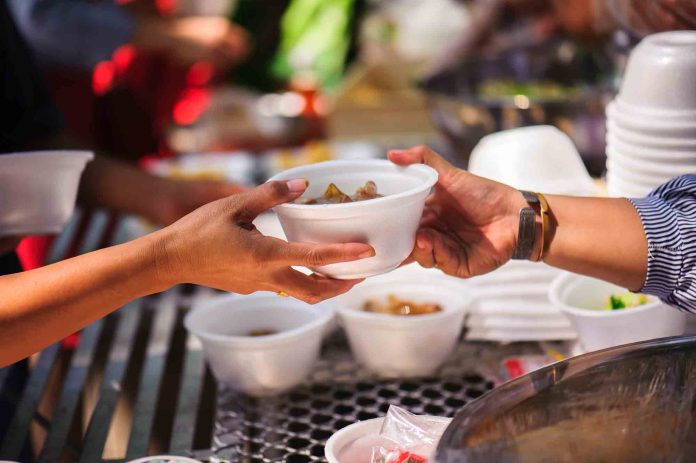This article is written by Oishiki Bansal, a student of Symbiosis Law School, Noida. The article elucidates the different IP rights available for the food industry and how one can develop an IP strategy.
Table of Contents
Introduction
When some competitors tried to steal Willy Wonka’s creative recipes, the Oompa Loompas came to his rescue. However, neither does Willy Wonka exist, nor do Oompa Loompas in the real world to protect secret recipes and creative ideas from being stolen and losing an edge over competitors. Then how can one protect one’s creative and innovative food recipes in the real world? Yes, the very old and basic Intellectual Property Rights come to the rescue. Here is how Intellectual Property Rights can be used to protect innovative ideas in food startups.
IPR in food startups
Intellectual property rights aim to protect the creative and innovative interests of the human mind turned into a form that could have commercial value. Intellectual property rights that are applicable in the food industry are –
- Patents are governed by the Patent Act, 1970. They are granted for 20 years as provided by Section 53 (amended by the Patents (Amendment) Act 2005), starting from the day of filing. For a patent to be granted, the following conditions are to be fulfilled –
- Novelty – the innovation should be novel, i.e not known or used by anyone before.
- Innovative – involves something that a skilled person can not do without knowing the inventive step.
- Commercial applicability – the idea or product can be commercially used.
- Trademarks are governed by the Trademark Act, 1999. They are granted for 10 years as provided by Section 25. A trademark, in simple terms, is any symbol, logo, design, or word that gives your brand a unique standing among the competitors.
- Copyrights are governed by the Copyright Act, 1957. They are available for the lifetime of the creator and added 60 years after the death of the creator, as provided under Sections 22- 29 of the Act. They are given for any artistic or literary work that is original and creative.
- Trade secrets are not covered by the statute of legislation in India but are enforced through the Indian Contract Act, 1870. Registration of a trade secret is not required and, contrary to patents, they protect the creations for an unlimited period.
- Geographical indicators are enforced through the Geographical Indication of Goods (Registration and Protection) Act, 1999. They are granted for 10 years as provided in Section 18 of the Act and can be renewed from time to time. These aim to protect agricultural products, drinks, foodstuffs, etc that have a specified origin and they possess special qualities or reputation because of that origin.
Use of IP in food startups
Intellectual property rights can be used in the food industry in the following ways:
- Patents
Patents that are allowed to the food industry are called utility patents. Generally, getting patents for new recipes is a difficult process, as it is hard to prove that the recipe is non – obvious for a person who is a skilled chef. However, this does not mean that patents cannot be filled in the food industry. One can file a patent for the process, new additives, packaging, labelling, and so on. Patents can be provided for a new usable step that is added to the process of making a food product, which enhances the quality of food products already being sold in the markets.
For example – if a person introduced a new process that could enhance bread’s longevity and add a few more days before it goes stale, the process can be patented, but the filer will have a problem in patenting just by saying that the bread he produced is the best bread ever!
The process of obtaining a patent is cumbersome and the patent holder only gets the right to protect its invention for 20 years, which cannot be renewed after the term ends. There are many categories in which a person can apply for a food patent. Some of them can be classified in the following:
- Creating new ways of making special diets such as gluten-free food, vegan diet, or keto recipes;
- Developing software apps for food-related products;
- Increasing shelf – life of products or making new combinations, etc;
- Developing a new kind of kitchen appliance or adding innovative ideas to existing appliances, and many more.
In the case of Mead Johnson & Company v. Hill man’s, Inc (1942), the district court of Illinois, while defining what all is included in the invention, stated that merely changing the shape, size or the steps of the procedure does not come under ‘invention’ and a patent cannot be granted for such change.
- Trademarks
“I’m lovin’ it” by McDonald’s, “goodfood, good life” by Nestle, Amul’s “the taste of India”, Cadbury’s “Kuch meetha hojaye” are some most common and famous examples of taglines that have been trademarked by the famous companies. These taglines help the companies to differentiate their brand from that of competitors. Thus, every company needs to invest considerable time and investment in finding a unique brand name and logo. Trademarks help the companies to protect these symbols and identities that provide a unique standing in the market. While deciding on a trademark the companies should ensure that the brand chosen is-
- Distinctive
- Should not be descriptive – blueberry can be considered as a good name for a smartphone, but it can’t be trademarked for blueberries.
- Should not be similar to or used by your competitor – recently, in the case of Starbucks Corporation v. Sardarbuksh Coffee & Co (2018), Starbucks sued an Indian food startup named Sadarbuksh for infringing its brand name and logo. The court ordered Sardarbuksh to stop using the green colour logo and not to use any words related to ‘bucks, baksh, buksh, star’ etc.
Therefore, while deciding on a trademark one should go through thorough research about the existing trademarks in the same industry. Toblerone and KitKat both applied for the trademark, but only Toblerone was granted one for its unique triangular chocolate bar based on mount Matterhorn peak, whereas KitKat was denied as it failed to prove uniqueness in the rectangle design to its wafer chocolate bar, even though it proved that the customers recognized the bar with nestle.
- Copyrights
Through copyright, the creator can protect their literary/artistic work. Copyrights are generally not granted for recipes as it becomes difficult to prove who was the original creator of the recipe. It should be noted that merely identifying the ingredients needed for a specific dish is a statement of fact, and are not eligible for copyright, but the literary expressions involved can be copyrighted. In the food industry, one can protect the blogs, websites, cookbooks, a creative manner to present the dish, and much more. Copyrights protect for a much longer period than any of the Intellectual Property Rights do.
- Trade secrets
Most food companies go towards acquiring a trade secret as there are no registration hassles and costs plus the trade secret is protected by the courts. They are chosen over patents as trade secrets can be exercised for an unlimited time, contrary to patents that become public after 20 years. The reason why coca-cola and KFC do not have competition is that they chose trade secrets over patents. However, trade secrets involve internal hassles such as confidentiality and non – disclosure agreements with their employees. These agreements are often in force even when the employment contract with the company ends. Trade secrets help the companies in protecting their unique recipes till they are not leaked to the public. Although there are legal consequences for leaking a trade secret in the market once the beans are spilt, there is no way back the company can stop competitors from stealing its secrets.
- Geographical indicators
These rights are not often used by recipe creators but they come in handy when the food product involves some qualities that come from that region one can try going for protection under geographical indicators. For example – Darjeeling tea. Kashmiri apples etc.
How can an IP strategy be developed
Developing an IP strategy is important for a startup, as proper choices of Intellectual property rights help the companies establish brand image from the start. Many things such as the processes that need to be protected, the time requirement of a given IPR, how the competitors protect their innovations and creative ideas are to be kept into consideration while choosing the correct intellectual property.
Core assets need to be evaluated by food startups and the utility of the intellectual property to come with the correct investment choice. The reason why coca-cola chose trade secrets over patents to protect its formulae and making coke loved by everyone in the world, is to keep an edge over all the competitors in the market. Although the original formula of coca-cola is patented, no one knows about the changes made thereafter.
Various efforts have to be put in to know the market and your competitors so that no one can claim any intellectual property infringement. The infringement claim not only puts a financial constraint on the company but also affects the brand image and its reputation.
The new product that is created also faces many technical issues such as technical requirements related to appearance, functionality, packaging, taste, colour, or shape while procuring an Intellectual Property Right.
An Intellectual Property Right can add a lot of value to the food product or recipes, only if the entrepreneur is willing to take deliberate steps to protect, preserve, and properly monetize those rights. Proper steps are to be followed and due deliberation should be given to every asset that can be protected under the law.
The entrepreneur should be clear about what he needs to protect the most and come with new and creative ideas for intellectual property to be granted.
A good IP strategy involves the combination of two or more Intellectual Property Rights to protect all the interests vested by the startup. Today, we associate the big yellow ‘M’ sign with McDonald’s, the three-dot blue and red logo to Dominos, as they invested in trademarks and copyrights during the initial years. Trade secrets act as an important right when it comes to protecting formulas and recipes that give a competitive edge. However, there should be a strong non-disclosure and confidentiality agreement that a company should work on.
Conclusion
Intellectual property rights have always been an important tool for protecting inventions and creations of human minds. They protect the interest of the inventors to further invest in research and development to make new products that help in our day-to-day activities. With the rise in competition in the food industry, it has become important to protect the recipes and creative process, blogs, ideas, etc., to create an impressive and useful IP strategy. The entrepreneur should have a very strong knowledge of the market, the consumers, the competitors and of course his own business.
References
- Intellectual property rights in food startups
- https://www.mondaq.com/india/trademark/954524/role-of-ip-in-food-industry
- https://basck.com/blog/creating-an-ip-strategy-for-the-food-industry/
- https://bigideaventures.com/psa-for-food-startups-know-your-value-and-how-to-protect-it/
- Food Patents: Everything You Need to Know
- https://www.jstor.org/stable/pdf/26655192.pdf?refreqid=excelsior%3Ad41613b788cbb63f7692b71a7d9c50b4
- https://www.kashishworld.com/blog/intellectual-property-rights-in-the-food-industry/
- https://www.food-safety.com/articles/6872-intellectual-property-protection-in-the-food-industry
LawSikho has created a telegram group for exchanging legal knowledge, referrals, and various opportunities. You can click on this link and join:
https://t.me/joinchat/J_0YrBa4IBSHdpuTfQO_sA
Follow us on Instagram and subscribe to our YouTube channel for more amazing legal content.
 Serato DJ Crack 2025Serato DJ PRO Crack
Serato DJ Crack 2025Serato DJ PRO Crack











 Allow notifications
Allow notifications



